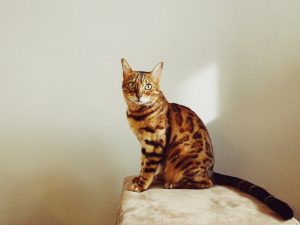Short answer
The average lifespan of a Bengal cat is around 12 to 16 years.
Life expectancy
The average life span of a Bengal cat typically ranges from 12 to 16 years. However, with proper care and a healthy lifestyle, some Bengal cats have been known to live up to 20 years or more. This breed generally enjoys good overall health and vitality, but they can be prone to certain genetic health issues, including hypertrophic cardiomyopathy (a heart condition) and progressive retinal atrophy (an eye disease). Regular visits to the veterinarian, a balanced diet, and exercise can help ensure a long and healthy life for a Bengal cat.
To maximize the life expectancy of a Bengal cat, it is important to provide them with a stimulating and enriched environment. Bengals are highly active and intelligent cats that thrive on mental and physical stimulation. They require regular exercise to prevent boredom and maintain a healthy weight. Providing ample opportunities for play, interactive toys, and climbing structures will keep them engaged and mentally stimulated. Additionally, a nutritious, high-quality diet tailored to their specific needs and regular veterinary check-ups are essential for their well-being.
While genetics play a role in determining a Bengal cat's life span, it is crucial to remember that individual factors, such as lifestyle, diet, and care, can greatly influence their longevity. Loving and responsible pet ownership, along with a commitment to meet their physical and emotional needs, can significantly contribute to extending a Bengal cat's lifespan. By providing a safe, loving environment and addressing their health requirements, owners can help ensure that their Bengal companion lives a long, happy, and healthy life.
Some interesting facts about Bengal cat
- Bengal cats are a crossbreed between domestic cats and Asian leopard cats, resulting in their unique and distinctive leopard-like spots and rosettes.
- They are highly active and energetic, known for their agility and love for climbing. This makes them excellent jumpers, often found perching on high surfaces in the home.
- Bengal cats have a fondness for water and are often seen enjoying a dip or playing with water. Some can even be trained to fetch objects, swim, or walk on a leash.
- These felines possess a naturally occurring genetic mutation that gives them a shimmering coat, known as the "glitter gene." This gives their fur a sparkly appearance, making them even more beautiful.
- Bengal cats are highly intelligent and curious, making them quick learners. They require mental stimulation and enjoy interactive toys to keep them entertained and prevent boredom.
Summary
Bengal cats, known for their unique coat patterns and wild appearance, typically live for about 12 to 16 years. However, with proper care, some Bengals have been known to live into their early 20s. Factors such as genetics, diet, exercise, and overall health play a significant role in determining their lifespan. Regular veterinary check-ups, a well-balanced diet, a stimulating environment, and appropriate exercise can help ensure a longer and healthier life for these exotic and beautiful felines.




